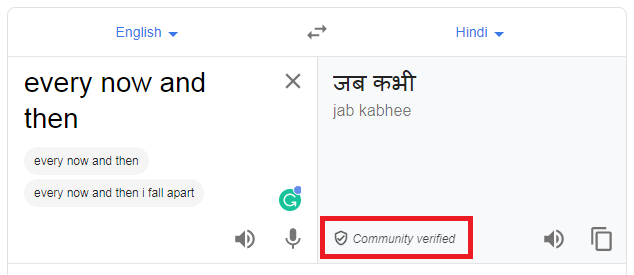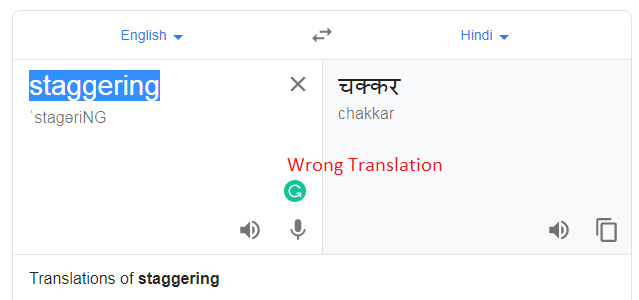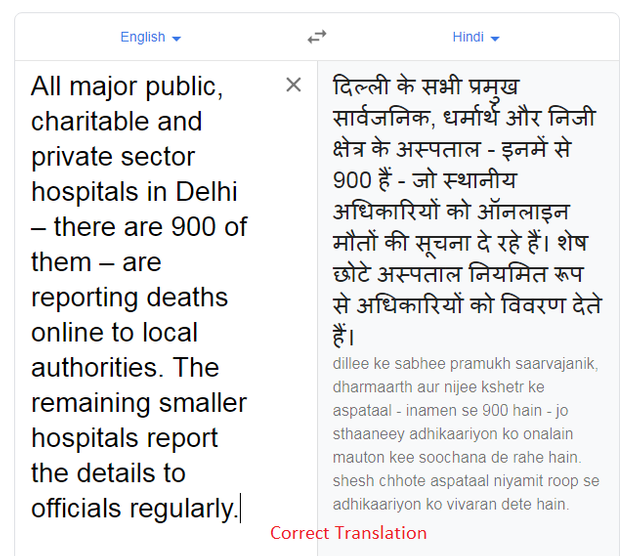My review on Google Translate- Mini Challenge #1 - Translation Software
Steem Blockchain being a multi-lingual community and with the essence of #thediarygame and #theshoppinggame, we can find a plethora of posts in different languages, the need for a translating app looks viable. I am investing a lot of time these days in Steem Blockchain and I very often use google translate to meet my requirement.
I generally use it on a desktop PC.
With my experience, I have observed that the accuracy of translation also depends on which language you are going to translate. I am from India, and here the Hindi language is very much prevalent. But the translation of English to Hindi using Google Translate is very poor and may not properly translate to the cultural tradition. Even more so, the grammatical error is so weird.
My findings are that Google Translate for English to Hindi and vice versa actually works well to some extent for simple sentences and if you are trying to translate a particular word then it may work fine, but again 100% accurate is the one which you can see community verified in that particular translation. So if the community verified is indicated in the translation then it is 100% accurate. Otherwise, always go for manual translation.
Google translation relies on probability, not accuracy as it relies on Statistical Machine Translation.
Google Translate operates off of what is known as Statistical Machine Translation (SMT). Basically, what SMT does is reference all available human-translated documents since 1957 and tries to match strings of texts from one language to another. Using SMT, Google Translate chooses the text string that is the most probable to be a match for the source text string. In practice, this method works with a modest degree of success with very simple sentences and words when translating between similar languages. However, because languages are filled with idiosyncrasies and “exceptions to the rule,” there exists an extremely high margin of error when translating anything of substancebetween two languages. This margin of error becomes even greater when the two languages belong to different language families.
So one should rely 100% on translation from English to Hindi and vice-versa only when it is indicated with "community verified".
For example, see the translation of this phrase. It is saying community verified, so 100% reliable.
Here you can see the translation of the word "staggering" which is wrongly translated by Google(no indication of "community-verified" either)
At the same time, I am not saying it does not work for sentences, that do work but only for simple sentences. So don't blindly follow the translator, just check it again what it translates. For complex sentences, translation is very poor.
For example, see this translation from English to Hindi. Being a simple sentence, correctly translates.
As I said earlier it works better for some of the languages which are somehow connected with the Latin alphabet. So some of the languages like German, Spanish, Portuguese, French, Dutch, etc the translation in English and vice versa definitely works well. The reason being these languages has a lot of presence in the internet for a long time than any other language.
Thank you.
This post is my entry to the Mini Challenge # 1 from @steemitblog .



Very interesting, thank you.
Thank you.
Expanding into global markets demands more than just technical accuracy; cultural nuances also play a significant role. Providers of automotive translation specialize in adapting content like product descriptions and marketing materials to suit different markets. They ensure that technical terms are accurately translated while also tailoring the tone and style to resonate with the target audience. This dual focus helps your brand maintain credibility and relevance internationally. With professional translators experienced in automotive terminology, these services can bridge the gap between technical accuracy and cultural relevance.